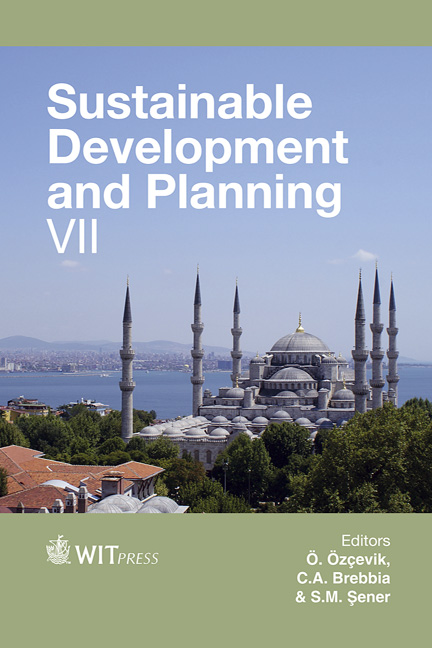Sustainable Urban Requalification In Algiers As A Way To Recover Deteriorated Areas
Price
Free (open access)
Transaction
Volume
193
Pages
11
Page Range
15 - 25
Published
2015
Size
1,298 kb
Paper DOI
10.2495/SDP150021
Copyright
WIT Press
Author(s)
M. Chabou-Othmani
Abstract
The main objective of the National Diagram of Territorial Planning in Algeria is to create attractive and competitive conditions. This reveals a political will to create a balanced territory with the aim of rational and sustainable use of land in strategic sectors development. At a territorial level this has been expressed through large scale projects such as important infrastructures, housing programs, etc. At a metropolitan level urban planning tools (PDAU) were revised and a “Strategic Plan” was based on attractive projects such as the improvement of Algiers Bay, etc. At a local level, a few facilities were built and public leisure places were reorganized. However, these actions were decided in order to enhance the image of the capital, scarifying a requalification, which was meant to increase quality of life in urban places. Some particular neighborhoods are marginalized, under integrated and in failure. Though these areas present great opportunities for land use and interesting socio-economic conditions. Nowadays, urban requalification is also understood to be a strategy of institutional re-appropriation. This means to re-conquer lands, to create new land values, to rebuild centralities, to promote citizen participation, to integrate renewable energies, to protect heritage, etc.
Through a canvas in two neighborhoods in Algiers: Beb-El-Oued and Oued Ouchaieh, our contribution has been to outline the possibilities from the perspective of reoriented planning on an existing city.
Keywords
urban requalification, strategic planning, deteriorated areas, institutional recovery, improvement of quality of life, gentrification, Algiers





